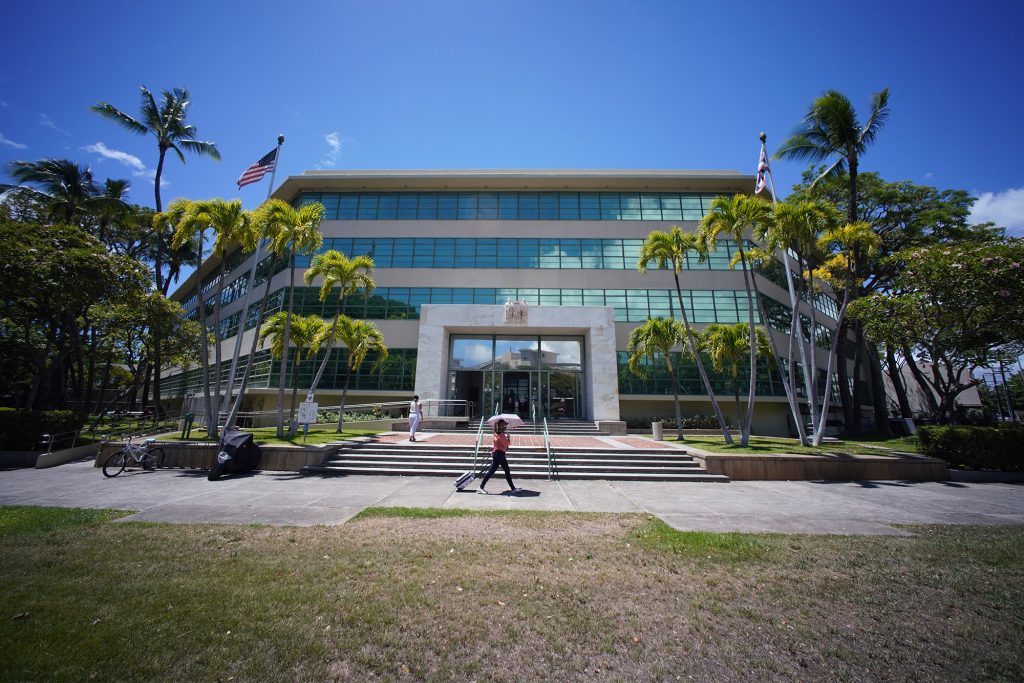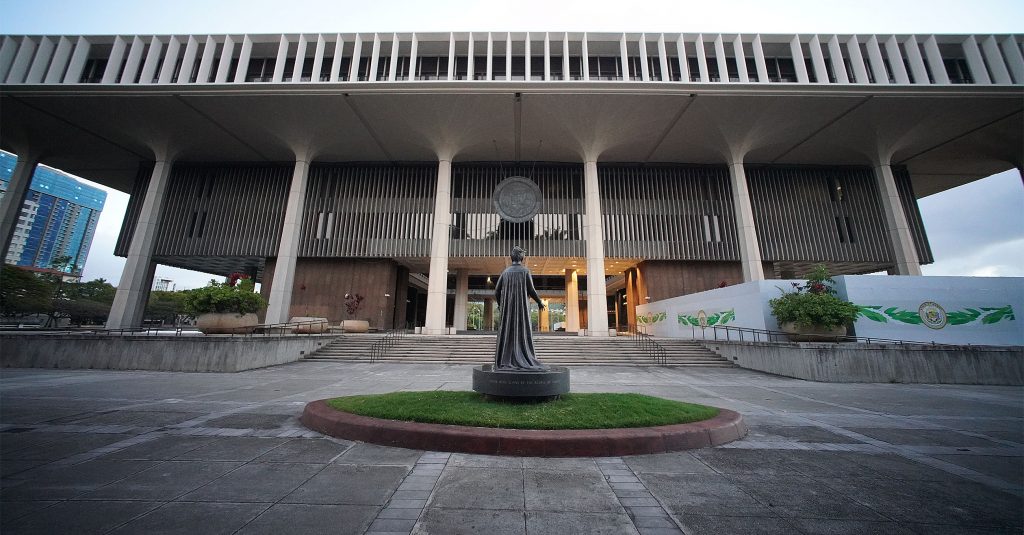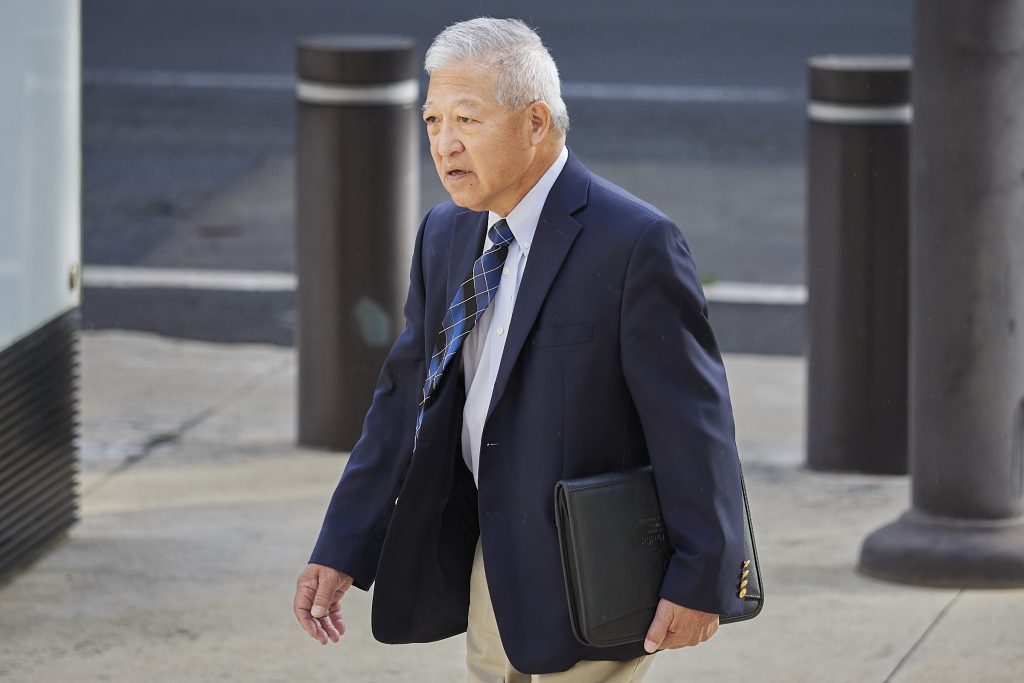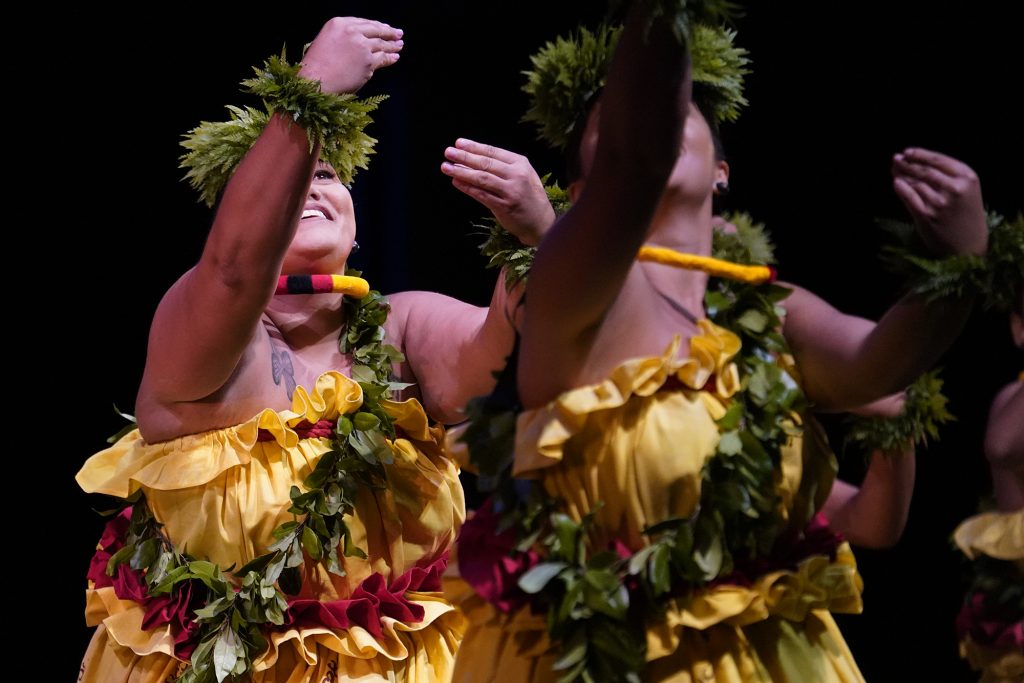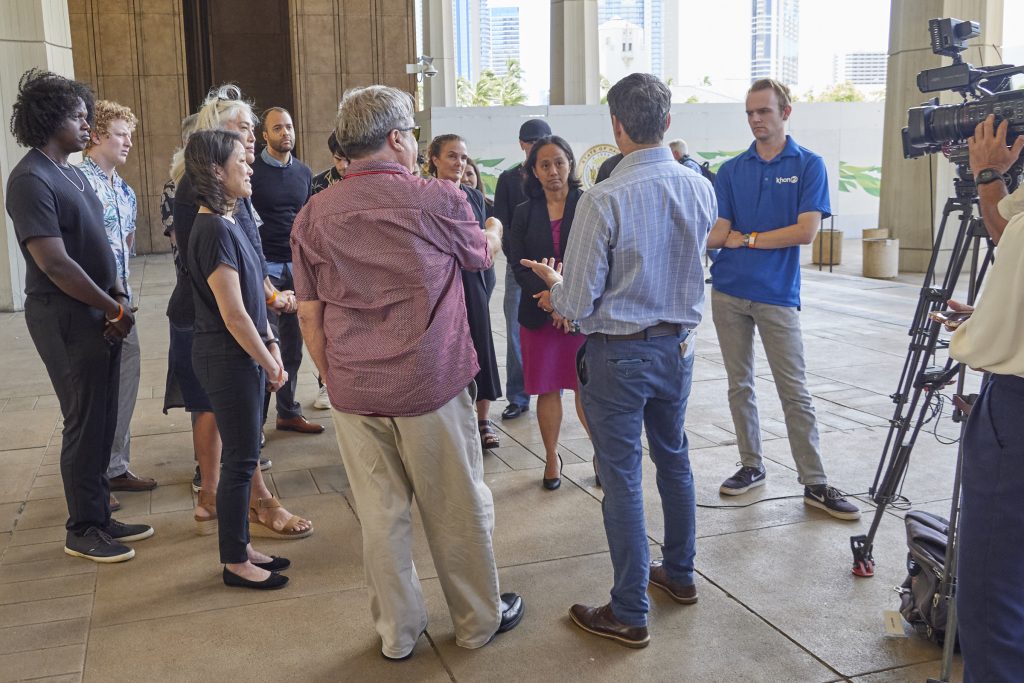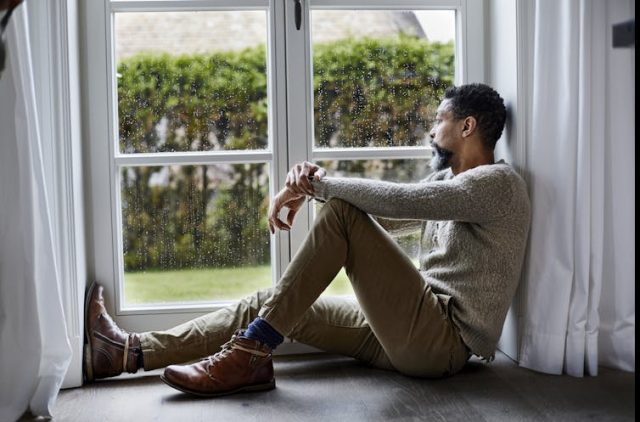Part 3 of a 5-part series
![]() KEAAU, HAWAII — In terms of quantifying school failure, at least by Department of Education standards, Nawahiokalaniopuu Iki is nearly unbeatable.
KEAAU, HAWAII — In terms of quantifying school failure, at least by Department of Education standards, Nawahiokalaniopuu Iki is nearly unbeatable.
The school, whose student body is among the poorest in the state, earned just 20 points out of a possible 400 on Strive HI, the state’s new system for measuring student achievement and improvement. Statewide, the school — Nawahi for short — ranked 287th out of 288 public schools.
So are the students dejected?
Hardly. The “failing” score is a political weapon — and a source of Hawaiian pride at Nawahi.
Nawahi is one of 20 schools in the state where a total of about 2,400 students learn in Hawaiian, not English. These Hawaiian immersion programs are publicly funded, and many are housed on regular public school campuses. Six of the immersion programs are charter schools, meaning they operate under their own, independent governing boards. (Nawahi’s K-8 levels are part of the charter system; its high school is not.)
The three-decades-old Nawahi has spearheaded the movement to revitalize the Hawaiian language by establishing immersion schools that are a form of blowback against what activists see as a generations-long strategic effort to extinguish the Native Hawaiian identity. It is why activists eventually responded by rallying at the state Capitol and boycotting regular public schools to make their voices heard.
While Hawaii in 1978 adopted a constitutional amendment requiring that its public education system promote the Hawaiian language and culture — and also made Hawaiian one of two official languages — on-the-ground change was slow to follow. Linguistics scholars, including Nawahi Principal Kauanoe Kamana, estimate that by 1983 fewer than 50 children spoke Hawaiian fluently. The state’s complicity was apparent; it didn’t repeal a long-standing law banning the Hawaiian language from public and private schools until 1986.
Regardless of the actual number of young Hawaiian speakers at the time, one thing was clear: the language was dying.
Civil Beat is profiling Nawahi as part of our series, Learning Hilo, with visits to several schools in and around the Hilo area that serve as snapshots of Hawaii’s diverse charter landscape. About half of the state’s 33 charter schools offer education that’s anchored in Hawaiian language or culture. Many of those schools are in Hawaii County, which is home to the largest percentage of Native Hawaiians in the state.
Pelehonuamea Harman, a 30-something teacher with a hibiscus flower in her long black hair, sits on a bench at Nawahi in an outdoor walkway as students speak fluid Hawaiian nearby.
Harman’s experiences parallel the fading and resurgence of Hawaiian culture over several generations.
She expresses pride in her great-grandmother, Mary Kawena Pukui, a co-author of the Hawaiian Dictionary, and yet, as Harman grew up in Honolulu and attended Sacred Hearts Academy and then Kamehameha Schools, she only spoke broken Hawaiian.

She only reconnected with that core aspect of Hawaiian culture and her family traditions as an adult, learning to speak it fluently in college after deciding that the language was a calling for her.
But if it is a calling, why is it leading to the school’s abject failure by DOE standards? The vast majority of Nawahi parents in recent years have taken a stand against those standards. Most children, with their parents’ consent, don’t take the state’s standardized test. The result: they earn a zero and weigh down the school’s collective score so heavily that it sinks to the bottom.
Forget teaching to the test; Nawahi is actively fighting it. And Harman isn’t some sort of arm-chair warrior driving the parents into a battle she wouldn’t fight. After some agonizing, she concluded that her three children in grades two, three and seven would all opt out of the tests. She fretted over the reaction of friends and relatives, but discovered that what she saw as a tough decision only garnered their admiration and support.
For her, it is about the school, the education and the culture, not some tests imposed from outside that are not very relevant to local lives. The campus where she teaches — and that her three children study at — is more than just a school. Nawahi is a way of life, she says — a political movement, an ohana. She spends long nights working on-site and has largely raised her children there.
“Now it’s just a matter of providing a venue through which it (the Hawaiian language) can be re-taught to these families,” she said. “I would love to see it in my lifetime where we’re not a novelty.”
The air was still and quiet at Nawahi earlier in the morning as a stream of students flowed in to start the school day. Amid the hand-holding by parents and children, siblings, and even among students, there was hardly a word of English.
At 8 a.m. the school’s students gathered under a gazebo-style roof on the front lanai. All but two of them — Civil Beat‘s translators, Kaohu and Makamae, both 16-year-old juniors — joined in oli (chants) and songs as part of “morning protocol.”
At immersion schools such as Nawahi, students learn every subject, even foreign languages, in Hawaiian. The first English class doesn’t come until the fifth grade. Nawahi strictly enforces its Hawaiian-only policy; one student recalled how in younger grades children had to do push-ups on the rocks if they were caught speaking English.
Critics — including some state education officials — question the fairness of assessing immersion students by the same metrics used to evaluate students in English schools, especially since Hawaiian is an official state language. The state has already dedicated millions of dollars trying to develop Hawaiian-language assessments — including a $1 million allocation this year just to translate new Common Core standards — but immersion advocates say those tests have been rife with incorrect grammar and other problems.

Immersion schools face a myriad of challenges, perhaps the most high-profile and contentious involving the largely philosophical debate over standardized testing. All of Hawaii’s public schools are subject to federal and state testing requirements that government officials say offer one of the only feasible means of keeping educators accountable, gauging progress and coordinating interventions for struggling students.
But that requirement is particularly thorny for schools that teach in a language whose underlying world view makes it difficult to assess through standardized tests originally designed for English-speaking students.
So, over the past five or so years, the number of students who opted out of testing has increased. Last year, just 19 of Nawahi’s 138 charter students sat for the exams.
And yet, by other conventional benchmarks, Nawahi’s children are excelling, which is all the more impressive considering that two out of every three children are low-income. Not surprisingly, almost all of the school’s students — 97 percent — identify as Native Hawaiian, a demographic that tends to underperform, according to conventional academic metrics.
The education offered at Nawahi is rigorous, with students required to take college courses starting in their junior year and the English-language PSAT and SAT as they gear up for college. Nawahi has its own assessments based on Hawaiian learning methods. (Nawahi is an official “laboratory school” for teachers training at the University of Hawaii at Hilo’s College of Hawaiian Language.)

According to Kamana, Nawahi also enjoys a rare 100 percent graduation rate. But since its 46 high school students are technically enrolled at Hilo High (just its K-8 grades are contracted as a separate charter school), that rate isn’t factored into the school’s Strive HI score. The school also boasts an impressive 80 percent college-going rate with some students graduating on to Stanford and Oxford universities. This May the school earned a six-year accreditation from the Western Association of Schools and Colleges. (Just 15 of the state’s 33 charter schools are accredited, with another 10 currently seeking to join them.)
“We’re saying we have more than what you (the government) determine as being successful,” Kamana explained.
This all places the state in something of a pickle over how to assess the school. Hawaii Department of Education Superintendent Kathryn Matayoshi wrote a letter to Nawahi Principal Kauanoe Kamana this August commending the school’s achievement and acknowledging the school doesn’t belong at the bottom of the Strive HI index.
“It’s not an easy task and unfortunately will take more time to find a solution,” she wrote, explaining that at the end of the day the DOE is bound by federal accountability requirements. “But I am hopeful and determined.”
Schools at the bottom are required to implement specific intervention measures that Nawahi might have to fund from its current budget.
Nawahi’s operating budget is $2.3 million for the school’s K-8 grades, most of which comes from standard state and federal sources, but 18 percent is funded by grants from Kamehameha Schools (which gives $1,500 per student to 17 Hawaiian-focused or immersion charter schools throughout the state).
But Cheryl Lupenui, who chairs the Board of Education’s student achievement committee and is the only Native Hawaiian on the board, is less worried about funding issues than she is about the small number of students in the immersion programs. Lupenui is working on developing a new approach to Hawaiian education.
“We only have (2,400) students,” she said, noting that being raised on the East Coast gave a special appreciation for her cultural mooring. “This is shocking to me.”
Skepticism remains over whether immersion schools are setting students up for failure in a 21st-Century English-speaking country.
It’s a challenge that Tom Hutton, executive director of the state Charter School Commission, has been grappling with since taking over earlier this year. “This is a complicated issue and there are good people on every side who have good, noble motives looking out for the educational interests of kids and rejuvenating a language that was almost deliberately obliterated.”
Harman, for her part, said the skepticism just makes her “work extra hard at what I do.”
“(Their achievement) is not going to be measured by a standardized test in English,” she noted. “However, I know when they leave my classroom they’re prepared beyond the level that I was prepared at an English-speaking school at sixth grade.”
While there are questions about how much basic education students get, it is clear that they bask in Hawaiian values, which are visible in how the children carry themselves and in the traditions and symbols that surround them on campus.

Graduation week involves rituals that include a 10-mile walk to the grave of Joseph Nawahi, a prominent 19th-century Native Hawaiian government official after whom the school was named; the school’s original campus and the first Hawaiian-language preschool in Hilo town; a swim around the nearby Coconut Island without coming up for air; and a ceremony in which the mothers present each graduate with a three-color 24-inch feather lei that students start sewing in their sophomore year.
Meanwhile, the lines between the campus and the local community blur in many ways. Many, if not most, of the teachers are also parents of students and the school encourages Hawaiian language use at home among parents. Hawaiian-language courses are also open to the community one day each week.
“Speaking Hawaiian is our life … it’s our heart and without Hawaiian I wouldn’t be here today,” explained 14-year-old Kaleihalia, whose first language, like a third of his peers, is Hawaiian. “They can think what they want to think, but there’s going to have a time-point when the Hawaiian language is going to be out there.”
The boy feels like he’s on a mission to help restore the Hawaiian language in the islands. Such fervor, he says, is a “family thing” — his mom also works at Nawahi. And it goes far: “I’m not interested in English.”
But some believe the current immersion program exists inside of a bubble.
Laiana Wong, a linguist and Hawaiian language professor at UH Manoa, was at the Oahu immersion movement’s front lines. He was an early foot soldier, marching with his wife and two young sons to then-Gov. John Waihee’s office to rally for Hawaiian immersion programs before the state piloted two such schools in 1987.
Wong enrolled his first two sons, now adults, in that program. But by the time his third son, now 11, reached school age, Wong had a change of heart.
“Hawaiian language was in a desperate situation at the time so that (politics) was the focus,” he said.
But politics came to dominate the movement to the point where it may have “superseded” general education. Wong decided to enroll his youngest son at Kamehameha Schools after concluding that the quality of education at immersion schools — at least those on Oahu — didn’t cut it.
“I know people would be up in arms … looking at me as a sellout,” Wong said, emphasizing that he’s only speaking as a parent and professor who interacts with students who’ve graduated from immersion schools. “It was difficult because I had these illusions of my own identity being a certain thing and I had to go against that … I got disillusioned, not with the concept but with the execution.”
Wong wonders whether the movement’s vision for Hawaiian immersion has failed to take into account pressing philosophical and linguistic barriers, particularly the fundamental, often irreconcilable differences between Hawaiian and Western world views and expressions.
“We don’t want to just translate our English into Hawaiian, and let that be it,” Wong said. “We’re speaking English in Hawaiian, and if that’s the case it doesn’t matter how fluent you are. You’re not reaching your goal.”
Nonetheless, Wong doesn’t regret his involvement in the movement.
“That’s what we were forced into doing in a way,” he said, adding that Hawaiian immersion education “wasn’t being provided, so that was the only option — well, the option that we thought of at the time.”
Harman, back on the bench outside of her sixth-grade classroom, acknowledged that schools such as Nawahi may not be suitable to everyone. “A lot of people still feel like it is such a gamble and … in its experimental stages,” she said.
But, she added, “Nawahi really gives a lot of hope to a lot of people. Even if (some parents) don’t send their kids here, in the back of their minds they’re always rooting for us.”
Read other stories in this five-part series:
 GET IN-DEPTH
REPORTING ON HAWAII’S BIGGEST ISSUES
GET IN-DEPTH
REPORTING ON HAWAII’S BIGGEST ISSUES
Civil Beat is a small nonprofit newsroom that provides free content with no paywall. That means readership growth alone can’t sustain our journalism.
The truth is that less than 1% of our monthly readers are financial supporters. To remain a viable business model for local news, we need a higher percentage of readers-turned-donors.
